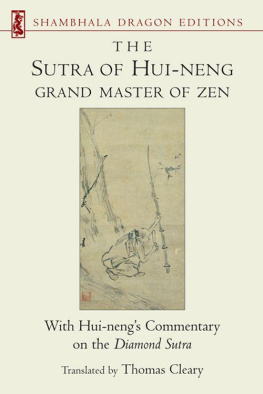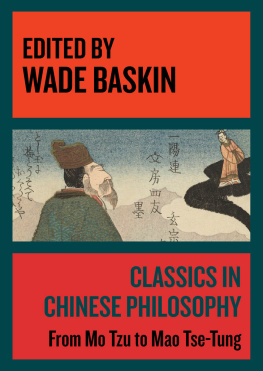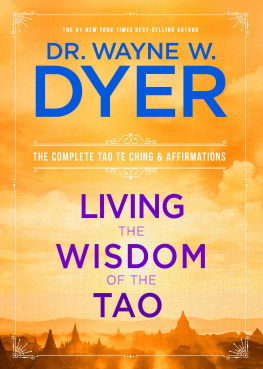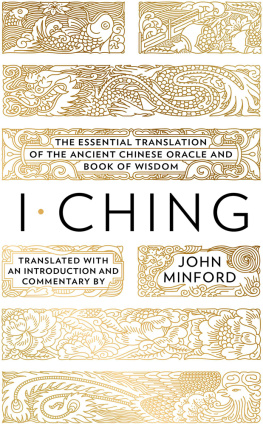ABOUT THE BOOK
The I Ching (Book of Change) is considered the oldest of the Chinese classics, and has throughout Chinese history commanded unsurpassed prestige and popularity. Containing several layers of text and given numerous levels of interpretation, the I Ching has been venerated for more than three thousand years as an oracle of fortune, a guide to success, and a source of wisdom. The underlying theme of the text is change, and how this fundamental force influences all aspects of lifefrom business and politics to personal relationships. This translation of the I Ching draws on ancient Confucian commentary, which emphasizes applying practical wisdom in everyday affairs.
THOMAS CLEARY holds a PhD in East Asian Languages and Civilizations from Harvard University and a JD from the University of California, Berkeley, Boalt Hall School of Law. He is the translator of over fifty volumes of Buddhist, Taoist, Confucian, and Islamic texts from Sanskrit, Chinese, Japanese, Pali, and Arabic.
Sign up to learn more about our books and receive special offers from Shambhala Publications.

Or visit us online to sign up at shambhala.com/eshambhala.
I CHING

The Book of Change
A COMPLETE & UNABRIDGED TRANSLATION BY
Thomas Cleary

SHAMBHALA
Boulder
2017
SHAMBHALA PUBLICATIONS, INC.
4720 Walnut Street
Boulder, Colorado 80301
www.shambhala.com
1992 by Thomas Cleary
Cover art by Robert Spellman
Cover design by Jim Zaccaria
All rights reserved. No part of this book may be reproduced in any form or by any means, electronic or mechanical, including photocopying, recording, or by any information storage and retrieval system, without permission in writing from the publisher.
eISBN 978-0-8348-4110-9
ISBN 978-1-61180-500-0
CONTENTS
T he Book of Change is the most ancient and most profound of the Chinese classics, venerated for millennia as an oracle of fortune, a guide to success, and a dispensary of wisdom. The ancestor of all Chinese philosophy, it is the primary source for the pragmatic mysticism of the Tao Te Ching, the rational humanism of Confucius, and the analytic strategy of Sun Tzus Art of War.
The Book of Change was originally composed over three thousand years ago by a king and his son in the tutelage of a Taoist sage. Six centuries later, the book was analyzed and annotated by Confucius, the great scholar and educator. The result of this work was the classic in the format known today, a compendium of advice on the causes behind the rise and fall of kingdoms and careers.
The earliest function of the core symbols of The Book of Change is traditionally said to have been as a system of notation, a tool for grouping associations and defining relations symbolically. This system evolved into a language of logic for describing the courses of actions and events.
The sources of The Book of Change lore are thus to be found in the origins of writing itself, in the attempt to depict phenomena and events in written symbols. The structures of The Book of Change represent dynamic patterns of causal relations; the total design of the book constitutes a symbolic language generating descriptions of relationships as they change over time.
The original recorded versions of The Book of Change would have been inscribed on strips of bamboo or wood, which when arrayed for the purposes of consultation would not resemble a modern book in form or structure. The internal order was maintained by the relationships among the principal symbols, which by virtue of their complexity allowed several different systems of interrelation to coexist within the internal order of the abstract Book of Change.
Consulting The Book of Change
A convenient method of consulting the book is given in an ancient appendix attributed to Confucius, according to the following directions:
Change has an absolute limit:
This produces two modes;
The two modes produce four forms,
The four forms produce eight trigrams;
The eight trigrams determine fortune and misfortune.
This formula summarizes the basis of the structure of The Book of Change, from which is derived the simplest method of drawing specific advice from the book.
1. The absolute limit of change refers to mental quietude. The first step in consulting The Book of Change is to calm the mind.
2. The two modes are yin and yang. These abstract terms stand for flexibility and firmness, weakness and strength, stillness and movement, passivity and activity, sadness and happiness, depression and elation.
Identification of yin and yang factors and qualities in a person or situation helps the reader to understand and apply the statements on the yin/yang components of each sign of The Book of Change.
Note that yin and yang do not symbolize femininity and masculinity in The Book of Change. In the symbolism of this system, a female represents yin and a male represents yang, but not the other way around.
A female symbol therefore does not represent female gender, and a male symbol does not represent male gender; yin does not represent women and yang does not represent men. Yin and yang are universal complements that occur in all people and events.
It is also important to note that yin and yang do not symbolize bad and good. Yin and yang can be either good or bad, according to the function of the quality in a given situation.
3. The four forms are called major and minor yin and yang. The yin mode is subdivided into major yin and minor yang, or climaxing yin and incipient yang. The yang mode is subdivided into major yang and minor yin, or climaxing yang and incipient yin.
The significance of these subdivisions is in representation of the principle that yin and yang modes are not static, but are always in the process of waxing or waning.
4. The eight trigrams produced by the four forms of yin and yang complete the foundation of the book, and finally yield the symbols used to manipulate the book for spot consultation:
Major yang trigrams: SKY and LAKE
Minor yin trigrams: THUNDER and FIRE
Major yin trigrams: EARTH and MOUNTAIN
Minor yang trigrams: WATER and WIND
The permutations of these eight symbols form the cores of the sixty-four chapters of The Book of Change. Accordingly, the consultation is carried out through the juxtaposition of their symbolic values:
SKY represents strength or creativity.
LAKE represents joy or attraction.
THUNDER represents initiative or action.
FIRE represents attention or awareness.
EARTH represents receptivity or docility.
MOUNTAIN represents stopping or stillness.
WATER represents passion or danger.
WIND represents penetrating or following.
The consultation is done by selecting a pair of symbols representing qualities relevant to the situation under consideration. These may stand for facets of personality and character in individual people or groups, or for dominant forces in the fabric of an event, activity, or undertaking.
Each pair of symbols produces two hexagrams (or one, where the same symbol is taken twice). These become the text for consultation, reading in the manner described below. Please refer to the charts at the end of this introduction for the combinations of trigrams, the hexagrams they produce, and examples of typical relationships and situations they may be used to represent.
Next page





















